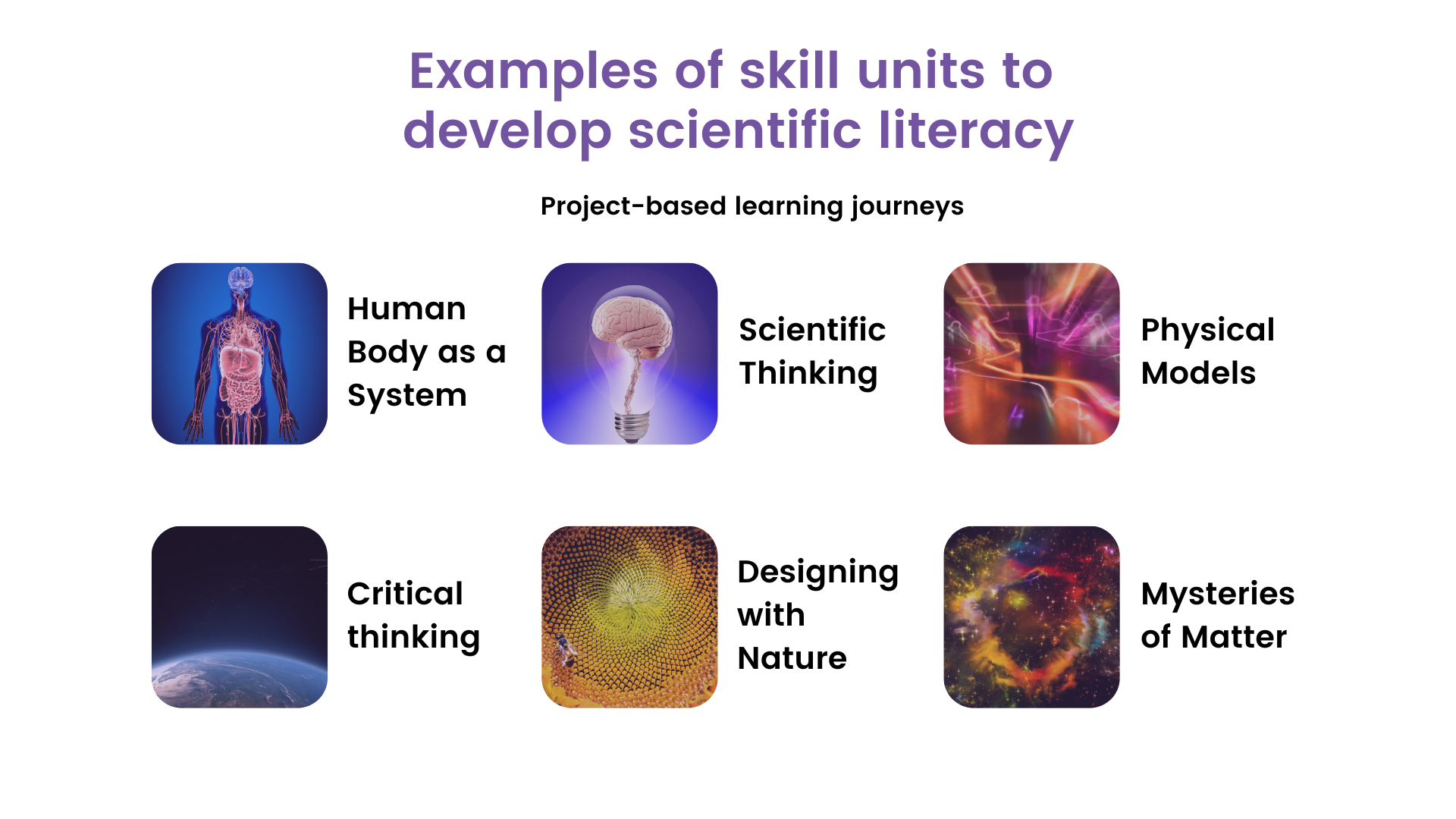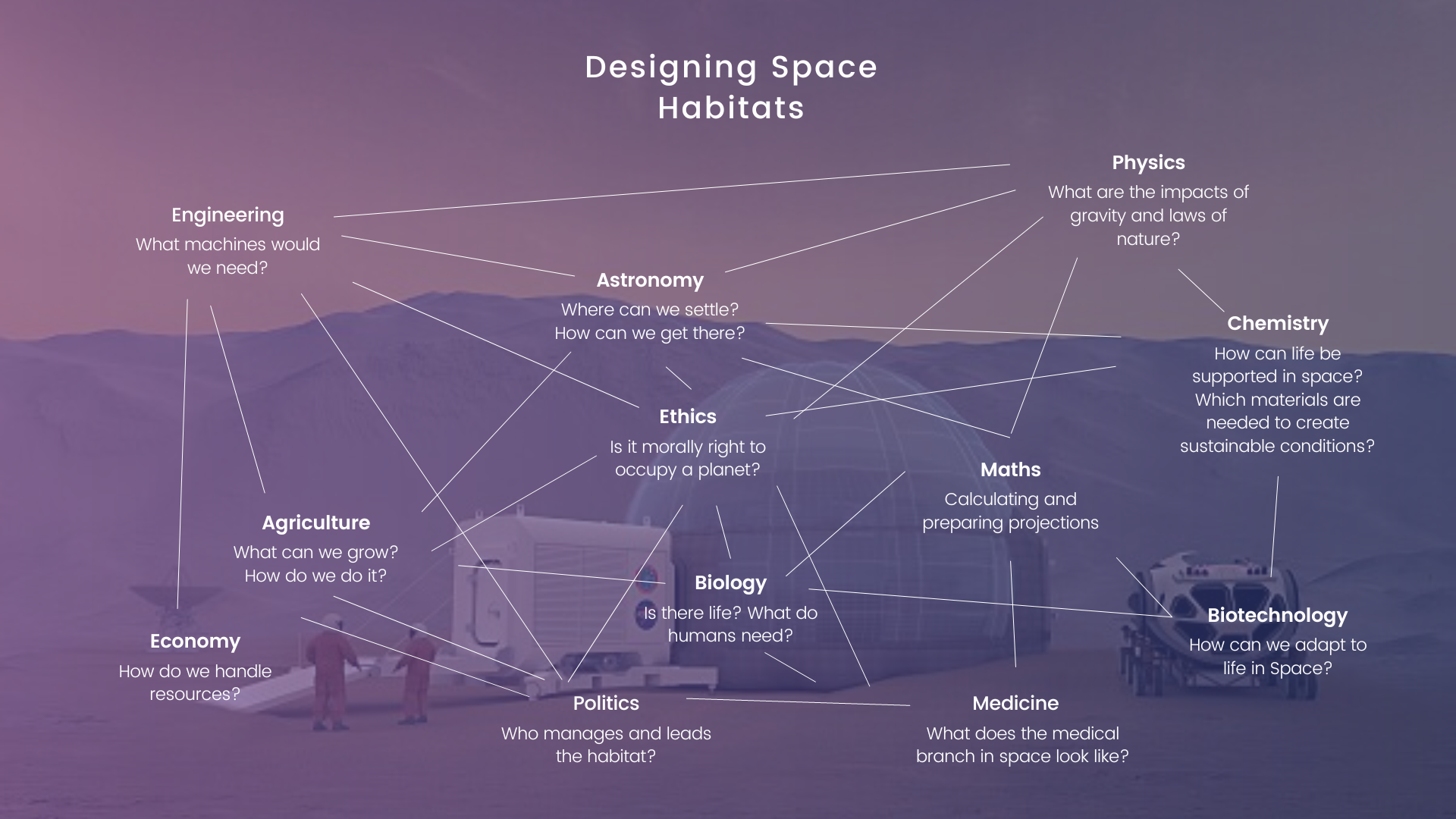Applications are open for our September term! 🚀
Applications are open for our September term! 🚀
Whether we realize it or not, science is all around us. It is in the technology we use, the medicines that heal us, the food we consume, and the environment we inhabit. Science is not confined to the walls of a laboratory; it is an integral part of our everyday experiences.
Yet if you ask most students what they think science is, they would say that it’s a “subject”. This is because science is often taught as a body of knowledge – a collection of facts and figures. As a result, most of us end up learning science through rote memorization and information consumption. This needs to change.
In the words of the astronomer and legendary science author, Carl Sagan, “Science is a way of thinking much more than it is a body of knowledge.” Science is best thought of as a method and process, and it is the most powerful tool that we have to understand both ourselves and the world around us.
Science is an iterative process of observation, hypothesis formulation, experimentation, data analysis, and peer review allowing for the continuous refinement and expansion of scientific knowledge. It has been this method over the last thousand years that has allowed us to advance our understanding as a species, and propel human progress.
It’s also crucial to understand that science leads to a constantly evolving body of knowledge. Paradigm shifts occur when new evidence, discoveries, or revolutionary ideas challenge the existing paradigm and necessitate a fundamental reevaluation of scientific understanding.
Yet, science isn’t just for scientists. Marketers can apply the scientific method to investigate which campaigns perform better than others. Entrepreneurs can apply the method to experiment with different features. More importantly, all humans can apply an understanding of the scientific process to evaluate claims and better identify misinformation in the digital world.
The conventional approach to science education, centered around textbooks, lectures, and rote memorization, often fails to engage students in this scientific method. It’s time to shift the focus from the mere accumulation of facts to an approach that encourages learners to actively explore, experiment, and question the world around them.
At School of Humanity, we decided to challenge the traditional approach to scientific investigation. In fact, our science credit areas fall under a domain in our core curriculum aptly named “Discovery”. This is the set of learning targets on scientific, technological, and mathematical skills that we want to guide our learners towards.
Over the course of their high school experience our learners:
In our “Scientific Thinking” skill unit (self-paced, project-based learning journeys at School of Humanity) our learners apply science as a way of thinking to a range of personal and professional circumstances. They expand their scientific toolkit with dispositions like curiosity, skills such as Socratic questioning, and mental models, such as Occam’s razor. Learners also learn how to identify pseudoscience and become critical consumers of information.
In another unit called “Designing with Nature”, we learn from nature’s strategies when designing solutions to challenges. We examine case studies of nature-based innovations and learn how to apply biomimicry.

Science, like any skill, is most engaging to a learner when it is taught in the context of real-world applications. And in the real world, global challenges often require an interdisciplinary approach. Whether it be climate change or a pandemic, it often takes a collection of disciplines to understand and tackle a challenge.
This is why, at School of Humanity, we run challenges instead of courses. During the first 5 weeks of the challenge, learners develop their knowledge and skills in an interdisciplinary way in order to better engage with the challenge. For example, in our “Designing Space Habitats” challenge this term, we investigated some of the following questions in an interdisciplinary way:

Halfway through the term, learners begin to identify problems they wish to tackle and pursue projects. These projects can be entrepreneurial, artistic, technological, scientific, or something else. When learners choose to pursue a scientific project, they embark on a personalized journey of discovery through the scientific method.
For example, in the “Designing Space Habitats” challenge, learners conducted a scientific experiment to observe the first and second laws of thermodynamics. They formulated a hypothesis that energy would transfer from the room-temperature water in the cup to the ice cubes making them melt and decreasing the temperature of the water.
During the “Food, Energy & Water Security” challenge, our learners Tom, Arthur, and Nathaniel carried out primary and secondary research to test their hypothesis that the lack of information on sustainable vs non-sustainable construction materials is a barrier for construction companies to adopt sustainable alternatives. They carried out interviews with experts from construction companies to gain their perspectives on the current state of the construction, especially with regard to sustainability, and hear their views and experience when it came to specific materials. They analyzed this data along with research about sustainable materials to propose suitable alternatives for construction.
Mental models are cognitive frameworks that help us make sense of complex concepts and phenomena by simplifying and organizing information (see Farnam’s street collection of mental models from various disciplines).
These mental models are embedded throughout our curriculum and most notably, we focus on important mental models from core sciences. Instead of imparting content, the emphasis is on helping learners develop and apply useful mental models from the core sciences.
For example, in biology, mental models allow us to comprehend intricate biological systems, such as ecosystems, cellular processes, and genetic inheritance. They enable us to analyze and predict patterns in living organisms and appreciate the interdependencies within natural systems.
SoH learner Muzamil showcases his journey of developing problem-solving through physical models.
The way that most students’ understanding of science is assessed is through closed-book paper-based exams. This often means even when the examination questions are “application-based”, students have to be able to retain and recall textbooks’ worth of information, to be able to “apply” them in the context of a 1-hour exam.
Many students who don’t perform well in these examination conditions end up believing that they are bad at science or end up disengaging from the scientific method.
In order to truly evidence scientific thinking, we need to explore alternative ways of evidencing this learning. This can take the form of:
These alternative ways of evidencing learning not only provide a more holistic view of learners’ scientific abilities but enable the development of creativity, critical thinking, and effective communication which are critical skills for today’s world.
Scientific literacy is a crucial component of a flourishing society. It equips us with the tools to make informed decisions, drive further innovation, and better participate in timely discussions surrounding topics such as climate change, healthcare policies, and emerging technologies.
Most importantly, scientific thinking inspires a greater appreciation and wonder for the world that we live in. By prioritizing and investing in scientific literacy, we pave the way for a more enlightened society.